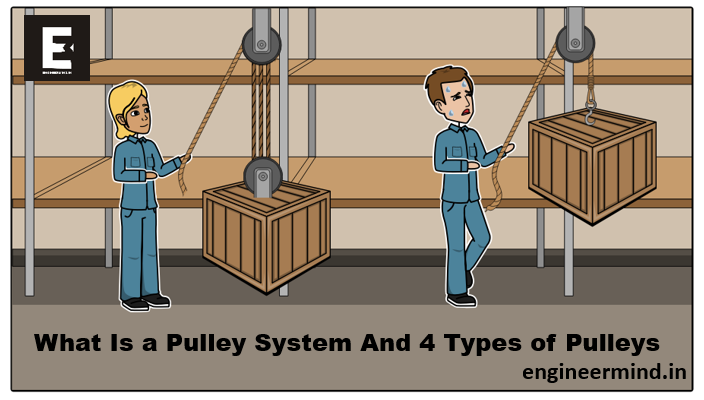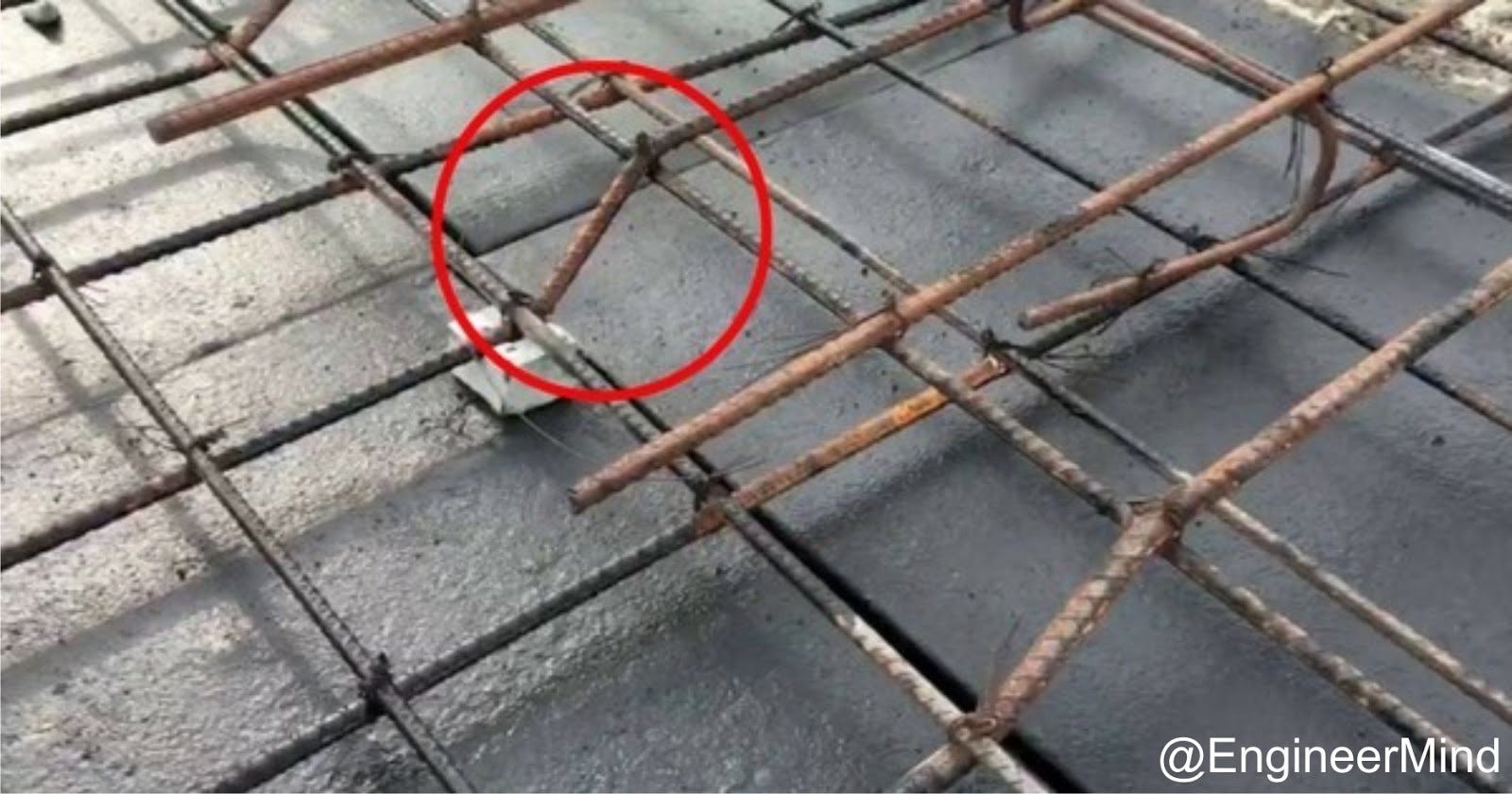Pulleys are simple machines that play a crucial role in various applications by changing the direction or magnitude of force. They are used in many industries, households, and even vehicles to make tasks more manageable and efficient. In this article, we will explore the pulley definition, how pulleys make work easier, types, advantages, disadvantages and examples of pulleys.

Table of Contents
Pulley Definition
What is Pulley? A pulley is a wheel that carries a flexible rope, cord, cable, chain, or belt on its rim. Pulleys are used singly or in combination to transmit energy and motion. Pulleys with grooved rims are called sheaves. In belt drive, pulleys are affixed to shafts at their axes, and power is transmitted between the shafts using endless belts running over the pulleys.
Although pulleys have a simple design, they are powerful machines that can change the direction of a force. Using one means we don’t need to lift an object straight up to move it. If we want to lift something that weighs more than 10kg over a meter in height, we should use a pulley. This makes this easier and frees us from exerting too much physical effort.
Imagine not having a pulley system to change the direction of pulling or force applied. It would be extremely difficult, if not impossible, to lift objects that are too heavy without help from another person.
How does a pulley make work easier?
A pulley makes work easier by redirecting and amplifying force. It helps reverse the direction of an individual’s lifting force. As a user pulls a rope down, the pulley lifts the weight. When two ropes and wheels are used, a pulley reduces the effort needed to lift a weight by half.
For example, if an individual wants to lift an object that weighs 200 kilograms, the person only has to pull down with force equivalent to 100 kilograms. A pulley with two ropes and wheels provides a mechanical advantage of two.
The measurement of the amount a pulley multiplies force by is called mechanical advantage. With a larger mechanical advantage, a person requires less force, but the distance to use force increases. When raising an object 1 meter high, a person has to pull the rope by 2 meters. Using more wheels and a longer rope looping over them, the force needed to raise the weight into the air becomes much less.
A pulley that uses two ropes to support an object is called a movable pulley, and a pulley that uses only one rope is called a fixed pulley. Lifting the object requires the same amount of force to pull it down. However, it changes the direction of the force. This way, users leverage their weight to add to the push, making work much easier.
Types of pulley
There are 4 types of pulleys:
Fixed Pulley

The wheel is fixed to a hard structure in this pulley while the rope is loose. It does not allow any redirection of force. So instead of lifting an object, the object can be pulled using this pulley.
If the axis around which a pulley rotates is fixed, the pulley is said to be a fixed pulley.
In the case of a fixed pulley, the load is attached to one end of the rope, and when the other end is pulled, the wheel turns, and the load moves upwards.
In the case of a fixed pulley, the force required to lift a body is equal to its weight, and hence by using a fixed pulley, there is no gain in force.
In the case of a fixed pulley, the distance moved by the effort is equal to the distance moved by the load.
Pulleys make the work easier by distributing the load weight among many strings and then giving you just one of them to pull.
Count the number of string sections holding the load, not the pulleys.
Movable Pulley

Here, the pulley’s wheel is not linked to any surface, but the rope is linked to a stationary surface. A heavy load is attached to the wheel rather than to the rope, and when the rope is pulled, the wheel can be seen sliding up the rope along with the load. This needs less work compared to lifting the load directly.
A movable pulley is a type of pulley that is free to move up and down, and its one end is attached to a ceiling or other object by two lengths of the same rope.
Movable pulleys are used in construction cranes, modern elevators, and some types of weight-lifting machines at the gym.
The movable pulley reduces the amount of input force to lift a load. The most popular system that uses this pulley would be well. Unlike the fixed pulley, the movable pulley is attached to the load and lifted by pulling up on the rope, making it twice as easy to lift a heavy object. In this case, it could lift a 20-pound load with just 10 pounds of input force. The trade-off is that you would have to pull twice the amount of rope, and gravity is not in your favour by pulling off.
Compound pulley

It has both stationary and movable pulleys. Here the load is kept on the movable pulley wheel, which is again connected to the rope of a fixed pulley. Using this type of pulley, redirection of both the force applied and the total workload is possible.
A compound pulley system uses a fixed pulley and a movable pulley so that an operator can move a heavy load with less physical effort. The multiple pulley system can multiply the strength and pulling power of the winch, lowering the strain on the winch and the object being pulled. Can find such a system on many heavy-lifting cranes and overhead winching machines. The block and tackle is also a type of compound system.
Compound pulleys are used in Sailboat, Elevator, Construction sites, Garage doors, Flagpole, and Gym equipment.
Block and Tackle Pulley

It can reduce the effort required to move a heavy object. It has several movable and fixed pulleys arranged in parallel with each other so that fixed ones are fixed, and movable ones are with the movables. Each pair is linked with another pair.
If you have ever looked at the end of a crane, or if you have ever used an engine hoist or a come-along, or if you have ever looked at the rigging on a sailboat, then you have seen a block and tackle at work. A block-and-tackle arrangement of rope and pulleys allow you to trade force for distance.
Advantage of Pulleys
The main advantage of using pulleys is that the effort becomes less than the normal lifting of weights. In other words, it reduces the force required to lift heavy objects. It also changes the direction of the force applied. These two advantages of using pulleys make them an important tool for heavy lifting. It also provides a mechanical advantage.
The other advantage of using pulleys is the distance between the operator and the weight. There is a safe distance between them which avoids any disaster. Pulleys are easy to assemble and cost-effective. The combination of different directional pulleys can change the position of the load with little effort. Though there are moving parts in the pulley system, they require less or no lubrication after installation.
Disadvantage of Pulley
Apart from the above-said advantages while using pulley systems, there are several disadvantages. The main disadvantage of using the pulley system is that it requires a large space to install and operate. The mechanical advantage of pulleys is that they can go to higher values but need more space to install them.
In some cases, the ropes/belts move over the wheel with no grooves, and the chances of slipping ropes/belts from the wheel are inevitable. If the system is installed to use for a long time, they require maintenance and regular check-up of ropes/cables as the friction between the wheels and cables/ropes occur, causing wear and tear to them. Continuous use of the system makes the ropes weak. The rope may break while using the system, causing damage to the operator, the surrounding place and the load being lifted.
Examples of Pulley
The following are common examples of pulley:
- In elevators, it uses multiple pulleys are used to perform the task.
- A cargo lift system is a pulley system that allows objects to be hoisted to higher floors.
- The Construction pulleys are used to lift and hold heavy materials in place.
- Several exercise equipment use pulleys to perform their functions.
- Films are moved in a pulley system separating the screens in the theatre.
- The glasses on the windows are operated using a pulley system to move them up and down.
- The clothesline uses a pulley system to easily pull the clothes towards the customer.
- Roofers can also use pulleys to raise the roof instead of attempting to take all the shingles up.
- You do not know that a crane is a type of pulley system used in construction.
- The bulldozer is also a great example that uses a pulley system.
- A pulley is used to extend the ladder.
- The sails on sailboats are lifted and dropped using a pulley system.
- Garage doors use a pulley system to raise and lower the door.
- People who go rock climbing use pulleys to help them climb.
- The timing belt in cars is a perfect example of the pulley.








